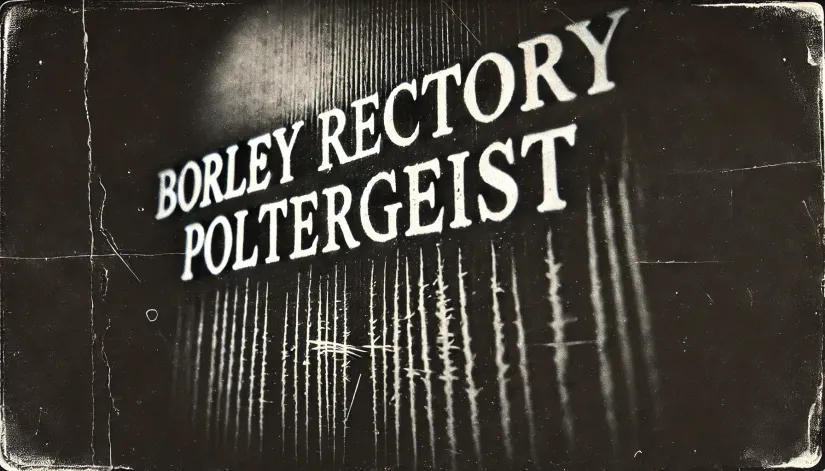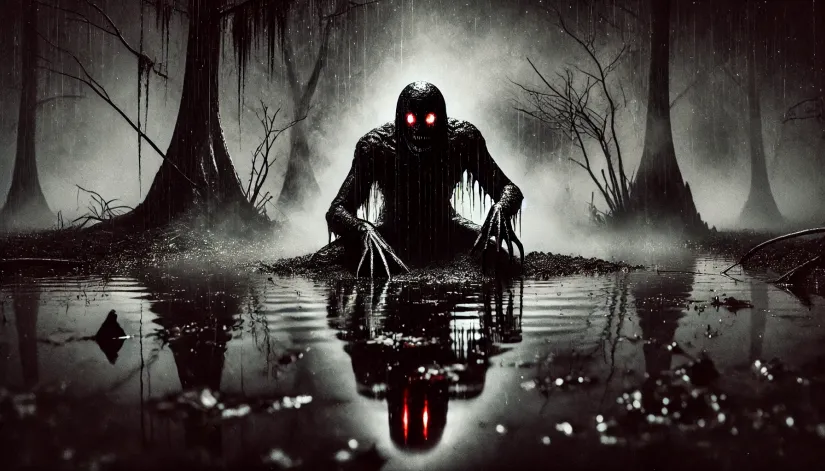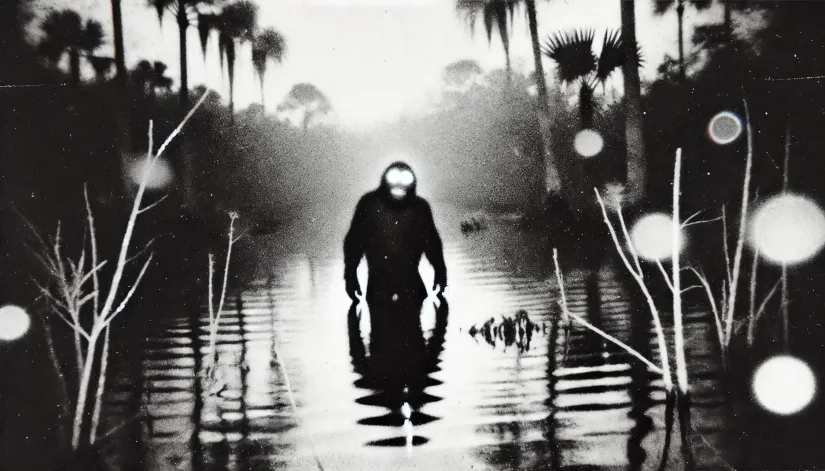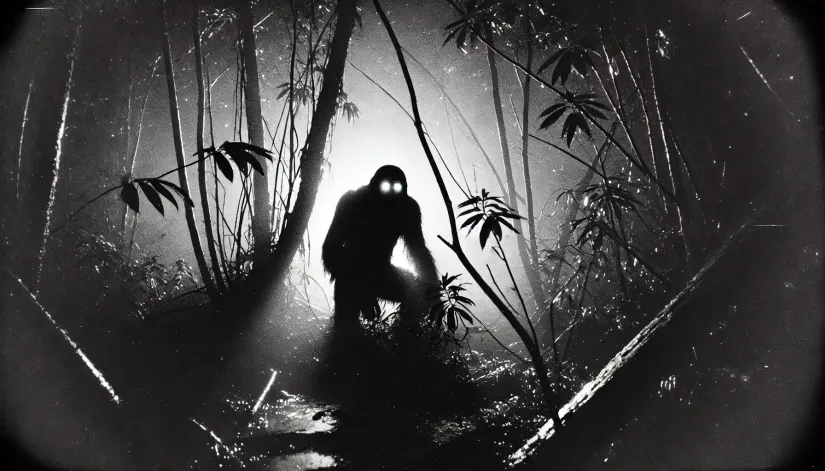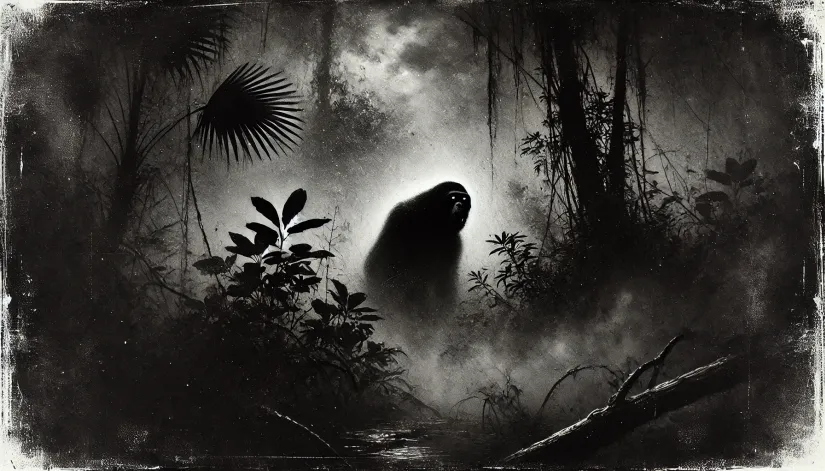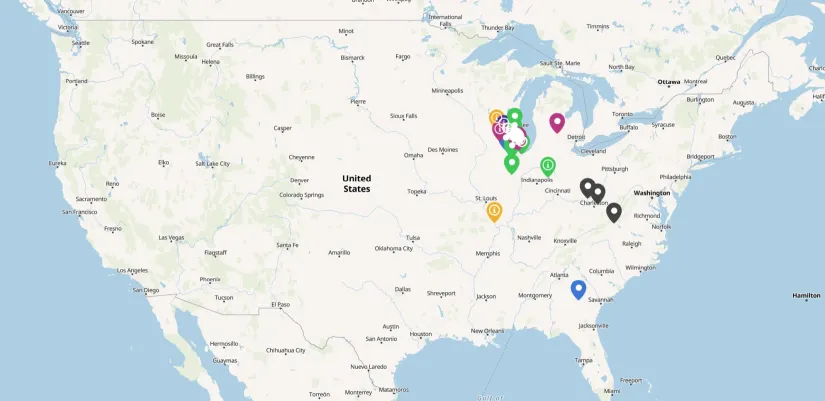The Borley Rectory ghost story is probably one of the most shocking hauntings in history. For those who know the story, I think you’ll agree it’s got all the ingredients of a true horror story. For those who don’t… well, you’re in for a wild ride.
First, the Borley Rectory haunting is a peculiar tale packed with strange sightings, unusually violent poltergeist activity, mysterious wall writings, and, of course, a lot of controversy.
Second, the mystery was never actually solved. I have some theories (which I will share in this article), but no theory can explain EVERYTHING that happened in that house.
And so, many questions still haunt us today: What really happened behind those old brick walls? What made so many families leave the house in terror? Did spirits (or other entities) indeed roam the Borley Rectory’s halls, or was it all an elaborate hoax that spiraled out of control? And was Borley Rectory truly the “England’s most haunted house,” as so many claim?
Let’s find out.
In this article:
Borley Rectory Timeline
Borley Rectory’s history spans nearly a century (from 1862 to 1944). A long period packed with paranormal events. So, keeping track of all the twists and turns—especially if you’re unfamiliar with the story—might be a bit challenging.
That’s why I thought that a brief timeline (just to give you a better perspective and help you pinpoint the key events) may prove helpful.
Borley Rectory events complete timeline:
1862:
Reverend Henry Dawson Ellis Bull builds Borley Rectory in Essex, England. The rectory had two purposes: to house his family and serve as the local parish’s residence.
Late 1860s:
The Bull’s family moves in as soon as the construction is finished. However, the alleged paranormal activity starts right away. The Reverend, his wife, and his children all start seeing mysterious figures in and around the house. Some staff members also see ghosts.
1892:
Reverend Henry Bull passes away, and his son, Harry Bull, takes over the rectory. The poltergeist-like manifestations continue.
June 9, 1927:
Harry Bull passes away, and the rectory sits vacant for about a year. Empty, but not at peace.
1927-1928:
Despite being empty, locals still report strange lights and unexplained noises coming from the rectory. People start to avoid the place, especially at night.
1928:
Reverend Guy Eric Smith and his wife, Mabel, move in. A few days later, Mabel finds a human skull hidden in a cupboard.
June 1929:
The Smiths reach out to the Daily Mirror. The newspaper connects them with Harry Price (a well-known paranormal investigator), which sets the stage for the first of many investigations.
June 12, 1929:
Harry Price conducted a preliminary investigation. He documents several strange events (like stones being thrown and messages from an unnamed entity).
July 14, 1929:
The Smiths, worn down by the haunting, decide to move out of the rectory.
October 16, 1930:
Reverend Lionel Foyster, his wife Marianne, and their adopted daughter Adelaide move into the rectory. The following months were marked by even more intense paranormal activity—including alleged physical attacks on Marianne.
1931:
Lionel Foyster attempts two exorcisms to rid the rectory of its spirits, but both fail miserably. During one ritual, he’s reportedly struck by a large stone. The media catches wind of this, and Borley Rectory is soon dubbed “the most haunted house in England.”
Related: Who is the Brown Lady of Raynham Hall Haunting Visitors?
October 1935:
As Lionel’s health fails, the Foysters leave Borley Rectory.
May 1937:
Harry Price returns to Borley, renting the rectory for a year to conduct a more thorough investigation. But he doesn’t go in with just a small team this time. He assembles a crew of 48 “official observers” to help him document the supernatural events. Over the next several weeks, the team—primarily students and assistants—reports numerous incidents, including sightings, cold spots, and moving objects.
March 1938:
During a séance, medium Helen Glanville claims to contact the spirits of a nun named Marie Lairre and a malevolent entity known as Sunex Amures. Sunex allegedly prophesies that Borley Rectory will be destroyed by fire, revealing bones beneath the rubble.
February 27, 1939:
Captain W. H. Gregson, the new owner, accidentally knocks over an oil lamp, igniting a fire that destroys the rectory. During the blaze, a local witness, Miss Williams, claims to see a ghostly nun in one of the upper windows.
1943:
The same Harry Price returns to supervise an excavation of the ruins. He discovers bones in the cellar he later claimed to be human. Locals, however, dispute their origin. Instead, people suggest the bones may be animal remains.
1944:
The remaining structure is demolished. Even during the demolition, Price and his team observe strange phenomena—odd temperature fluctuations and unexplained noises.
1949:
The Society for Psychical Research (SPR) reviewed Harry Price’s findings. They suggest that many alleged incidents may have been exaggerated or staged. Their report damages Price’s credibility significantly.
1958:
Marianne Foyster offers her first interview. She admits that some events were faked to cover up personal matters. Still, she insists that not all of the paranormal activity can be easily explained away.
1977:
Psychic researcher Iris Owen interviews Marianne Foyster again. While the interview doesn’t uncover anything new, it somehow reignites people’s interest in the Borley Rectory ghost.

Borley Rectory’s Strange History
Now that we have the timeline all set, let’s take a closer look at the actual events. And what better place to start than with the history of the rectory itself.
Borley Rectory was built in 1862 by Reverend Henry Dawson Ellis Bull as a home for his family and as the parish rectory in Essex, England. However, right from the get-go, the house earned a bad reputation for being haunted. In fact, the Bull family was among the first to reportedly experience strange noises and bizarre sightings almost immediately after moving in.
Now, here’s something intriguing. I think the location Reverend Bull chose for the rectory might have had something to do with the paranormal energy. While there isn’t enough evidence to confirm it, there were rumors that the site once held a Benedictine monastery.
Related: Stockwell Poltergeist: How One Servant Fooled Everyone
Local legends also spoke of a forbidden romance between a monk and a nun (from a nearby convent). After their affair was uncovered, the monk was executed, and the nun reportedly bricked up alive in the convent walls.
How much of the story is real? Hard to tell. Did Reverend Bull know the place’s history when he built the house? I can’t say for sure he did, either. But I think the locals definitely knew the legend. They had to know it because they were spooked by the house from day one, when the construction started.
Anyway, that’s just one of the things you should keep in mind. Let’s continue.
Reverend Bull built the rectory in a Gothic style. What does that mean? Long, dark hallways that seemed to stretch endlessly, countless narrow windows that let in just enough light to cast creepy shadows, and steeply pitched gables gave the house a looming appearance.
Now, it’s not like he wanted to build a rectory as creepy as possible. No. The Gothic style was quite common back then. But the ominous look and the remote location (the Borley Rectory was, simply put, in the middle of nowhere) were all elements that likely played into the rumors that something might be off with the house.

The Nun and the Headless Coachman
OK, so the locals were scared of the house. The thing is, the Bull family was, too. In fact, four of Reverend Henry’s daughters witnessed what they thought was the ghost of a nun at dusk, about 40 yards (37 m) from the house. They tried to talk to it, but it disappeared as they got closer.
Some of Henry’s journals have survived until today. According to his notes, the nun quickly became a common occurrence. He described her face as pale and expressionless, with hollow eyes that stared directly at anyone who saw her. She would sometimes materialize at sundown and slowly glide across the garden before disappearing into the shadows.
The Bull family even named this ghost the “Grey Lady.”
Local organist Ernest Ambrose later said the Bull family were “very convinced that they had seen an apparition on several occasions.”
Recommended read: Who Is the White Lady of Hohenzollern Castle?
After Reverend Henry Bull died in 1892, his son, Harry Bull, took over the rectory. Obviously, Harry already knew all about the events that plagued the house. Unsurprisingly, he had similar experiences, too.
For example, one day, Harry allegedly saw the ghost of a headless coachman and his coach moving across the grounds. And that wasn’t the only sighting of the spectral coach whose wheels made no sound as they rolled over the gravel paths.
No. Just like the nun, it quickly became something quite common. On certain nights, the spectral coach would race toward the rectory only to vanish just before reaching the front door.
On June 9, 1927, Harry Bull passed away. The rectory sat vacant for about a year. Empty, but not at peace because the abnormal activity didn’t stop just because the house was empty. Locals reported seeing lights flickering in the windows and strange noises echoing from inside, even though no one lived there.

The Smiths Move In
On October 2, 1928, Reverend Guy Eric Smith and his wife, Mabel Smith, moved into the house. Shortly after, Mabel made a shocking discovery while cleaning one of the rooms: a brown paper package containing the small skull of a young woman (or a child).
The skull looked quite aged. Who could it have belonged to? And how did it end up there? That’s still a mystery.
Mabel, understandably disturbed by the skull, decided to have it buried in the nearby churchyard. She probably hoped this act would bring peace to whomever the skull belonged to.
Yet, the burial did nothing to calm the restless Borley Rectory ghosts. In fact, it did quite the opposite. Shortly after the discovery, Smith’s wife believed she saw a horse-drawn carriage at night. And the disturbances in the house escalated, becoming even more terrifying.
As an interesting note, whatever paranormal manifestations the Smiths experienced in the house were entirely different from those of the Bull family.
How so? The Bull family reported seeing several ghosts. But no actual disturbances.
Related: Meet the Spirits: Are the Winchester Mystery House Ghosts Real?
For the Smiths, things played differently. At first, the disruptions were subtle. Like bells ringing without explanation at all hours of the day and night (despite being disconnected from any visible mechanism). The ringing was often erratic, sometimes sounding frantic as if in distress, only to abruptly stop.
However, the bells soon became the least of the Smith family’s worries. The Borley Rectory poltergeist ramped up to another level. The ringing was replaced by violent scratching sounds, typically starting late at night and going on for hours.
Scratching would often start quietly in the walls and gradually grow louder, almost as if something—or someone—was desperately trying to escape. Sometimes, the noises were accompanied by low moans or whispers.
On one particularly frightening night, Mabel allegedly awoke to find the scratching coming from directly beneath her bed, causing her to flee the room in a panic.
Understandably, the Smiths were terrified. And very sleep-deprived.
Related: Hinton Ampner Haunting: Restless Ghosts, Poltergeist, or Ancient Curse?
The weird sounds were soon followed by another level of paranormal manifestation: household items moving inexplicably. Chairs changing their position in the room. Pictures and paintings tilted one way or another. Missing tableware, candles, or keys.
One day, Mabel found the crucifix she had hung in the hallway turned upside down. Clearly not an accident. It felt like deliberate interference.
Eventually, the Smiths reached out to the Daily Mirror tabloid, asking to be put in touch with the Society for Psychical Research (SPR). On June 10, 1929, the newspaper sent a reporter to write about the Borley Rectory poltergeist.
The paper also arranged for Harry Price (a famous British psychic researcher and paranormal investigator) to make his first visit to the house, marking the beginning of the first formal investigations into the Borley Rectory ghosts.

The First Paranormal Investigation
So, who exactly was Harry Price? Born on January 17, 1881, in London, England, Price was the son of Henry Price (a merchant) and Emma Price (a homemaker). By 1929, he was already a well-known paranormal investigator.
His scientific approach set him apart from other “ghost hunters.” And, of course, his state-of-the-art equipment (for that time): plate cameras, thermometers, compasses—Price had it all.
However, his fame was both a blessing and a curse. People either loved or hated him. Why the divided crowd? Well, many thought he was a serious investigator. But there were few who saw nothing else in him other than an attention-seeking character who lived and thrived on drama.
The Investigation
On June 12, 1929, Harry Price went to Borley Rectory for his first investigation.
Interestingly, phenomena of a new kind appeared almost immediately after his arrival. And things got weird fast.
In one particular incident, Price reported stones being thrown around the house. By stones, I don’t mean pebbles. No. According to Price’s journal, sometimes they were larger rocks that came out of nowhere. The stones always seemed to fall when nobody was looking, almost as if something unseen wanted to be noticed.
Related: Anne Boleyn’s Ghost: The Tragic Queen Who Never Left
Then there were the messages. Price allegedly found “spirit messages” tapped out from the frame of a mirror, scribbles, and scratches on the walls. Most of the messages were illegible, but a few phrases stood out, like “rest in peace,” which appeared near where Mabel Smith had found the human skull.
Price’s findings were quickly picked up by the media, making Borley Rectory poltergeist even more famous.
However, these occurrences ceased as soon as Price left the Borley Rectory. Smith’s wife later maintained that she suspected Price, an expert conjurer, of falsifying the phenomena.
By this time, for the Smiths the attention was unbearable. Already worn down by the hauntings, they now had to deal with reporters and thrill-seekers crowding their home. It became too much for them to handle.
Finally, on July 14, 1929, they decided they’d had enough and left Borley Rectory for good, hoping to find peace elsewhere.
Another Family, Same Pattern—But Worse
Next, let me take you into what made many fear the Borley Rectory poltergeist. Because, for some reason, things got A LOT worse after the next family moved in. The escalation is hard to explain.

The Haunting of Marianne
After the Smiths left Borley Rectory, the parish had some challenges finding a replacement. In fact, it took them almost a year to find another priest.
Reverend Lionel Foyster, his wife Marianne, and their adopted daughter Adelaide moved in in October 1930. Almost immediately, things started going off the rails.
In a report Lionel Foyster sent to Price in October 1935 (five years after moving in), he wrote about several unexplained events in the house. These included moving furniture, missing objects (like keys, books, kitchen utensils), shattering windows, and bells ringing.
But the wall writings? That might have been the worst. The messages, written in this messy, childlike scrawl, seemed to be directed straight at Marianne: “Marianne, please help” and “Marianne, light mass prayers.”
The notes varied a lot—sometimes, they were pleading, occasionally angry, and sometimes just confusing. Marianne later confessed to leaving out a pencil and paper to see if she could get a response. And she did—crude, almost unreadable scribbles.
The Borley Rectory ghost was relentless. And Marianne appeared to be the primary target here. She got the brunt of it—she was slapped, pushed, scratched, thrown out of bed by something she couldn’t see, and even woke up on several occasions pinned down by an invisible force, unable to move or call for help.
Ultimately, she ended up covered in bruises that others could see for themselves.
Adelaide, her daughter, also had her share of scary experiences—she allegedly saw shadowy figures at night and a tall, dark shape standing at the foot of her bed. It stayed there until it slowly faded away.
All these were covered in-depth in the report sent to Price.
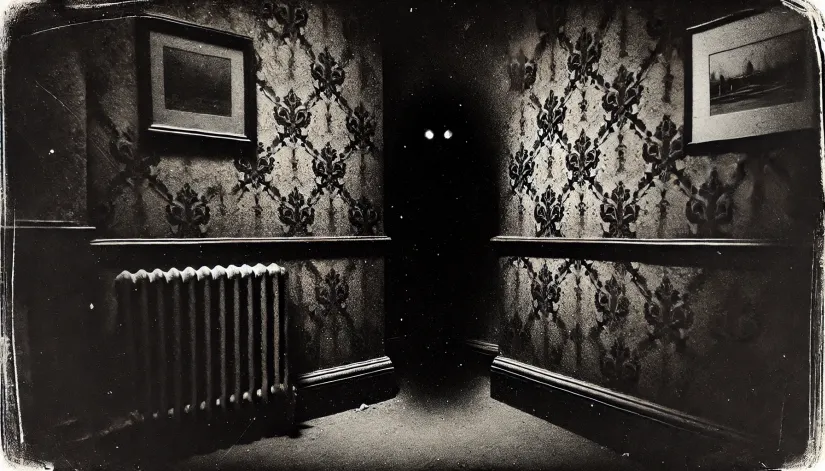
Attempted Exorcisms
So, what do you do when you’re at your wit’s end with something you can’t see? Lionel decided to go for an exorcism—twice, in fact. The first attempt was in 1931, right in the main hall.
He set up with prayers and holy water, bringing in friends and local church members to be witnesses. And as soon as he started, things got strange.
First, the temperature dropped drastically. As the ritual continued, chairs rattled, the chandelier swayed, and small items like candlesticks flew across the room. At one point, an old portrait fell off the wall, shattered glass everywhere, and nearly hit one of the witnesses.
Recommended read: Who Was Lizzie Borden, the Ax-Wielding Heiress Who Shocked America?
Lionel had to stop the ritual abruptly when a stone struck him on the shoulder out of nowhere.
In early 1932, he tried again—this time in the dining room, with more witnesses and another clergyman. It started the same way: the room got freezing cold, and the candles went out one by one.
One witness even claimed to be pushed backward by something they couldn’t see. The last straw was when a heavy cabinet tipped over, spilling everything inside. They had no choice but to end the ritual.
By 1935, the Borley Rectory ghosts had won again. The Foysters couldn’t take it anymore. Lionel’s health had seriously deteriorated, and they had to leave the house that had turned their lives upside down.
The Second Paranormal Investigation
In May 1937, Price leased Borley Rectory for a year to thoroughly investigate the reported paranormal activities. On May 25, 1937, he posted a printed advertisement in the The Times, which he used to recruit a team of “impartial observers.”
After personally interviewing everyone who showed up, Price hand-picked 48 “official observers”—mostly students, but also some of his friends and other interested individuals. These observers took turns in the house with clear instructions to document anything out of the ordinary.
The paranormal activity observed during this year-long investigation was largely in line with what Price had documented during his first investigation in 1929—some temperature drops, ghostly figures, vanishing objects, and strange sounds.
However, one incident would push the Borley Rectory poltergeist controversy even further—leading us into the next part of the story.

The Infamous “Floating Brick Incident”
On August 10, 1937, Price and several of his observers claimed to see a brick levitate in the rectory’s courtyard. The brick reportedly hovered four feet off the ground for about thirty seconds before dropping. Today, the event is known as the “Floating Brick Incident.”
Price managed to take a photograph, showing the brick mid-air with observers looking on. He later called this photo “undeniable proof of paranormal activity.” To further support his claims, Price called in some experts who analyzed the photo and concluded that there were “no signs of tampering.”
Of course, not everyone agreed with this assessment. Many argued that the photograph was inconclusive and could have been staged using wires or hidden supports.

Sunex Amures
In March 1938, Helen Glanville (the daughter of one of S. J. Glanville, one of Price’s observers) conducted a planchette séance in Streatham, South London.
During the séance, Glanville claimed to contact two spirits: Marie Lairre (a French nun who said she had been murdered and buried at Borley Rectory) and Sunex Amures (a malevolent entity).
The first ghost, Marie Lairre, claimed she had been bricked up alive as punishment for an illicit relationship with a monk, matching local legends about the rectory. She said her spirit was restless because her remains had never been properly buried, and she pleaded for a Christian burial.
On the other hand, Sunex Amures, the second spirit, brought a much darker message. Sunex claimed responsibility for much of the chaos at Borley Rectory and threatened to set fire to Borley Rectory at nine o’clock that night, March 27, 1938. He also said that after the fire, human remains buried under the house will be revealed.
The fire didn’t happen on that night, as Sunex Amures said it would. It happened 11 months later.
The Fire of 1939
On February 27, 1939, Captain W. H. Gregson, who had purchased Borley Rectory, accidentally knocked over an oil lamp, starting a fire that quickly consumed the entire house. Gregson claimed the fire was accidental, yet many couldn’t help but connect it to Sunex Amures’s prophecy during the séance.
As an even more peculiar detail, while the fire raged, a local witness, Miss Williams, claimed to see the figure of a nun standing silently in an upper window, seemingly unaffected by the flames.
Her testimony was collected by the same Harry Price. However, he also noted that Miss Williams requested a small fee (one guinea) for her story.
So, the fire didn’t happen when the entity claimed it would. But it happened exactly 11 months after the séance. Which is a bizarre coincidence, too, right?
Yes and no. After investigating the incident, the insurance company concluded that the fire seemed to have been started deliberately.
Price’s Final Investigation
In August 1943, Price received permission to conduct an excavation in the cellar of the charred remains.
The excavation led to the discovery of several intriguing items, notably a partial human jawbone and a few other artifacts, including medallions and coins. Price suggested these were relics from the 12th century, possibly linked to the spirit of “Marie Lairre,” the nun supposedly murdered on the property.
These findings seemed, at first, to lend credibility to the supernatural tales of Borley. However, locals were not so convinced. Several residents speculated that the bones might have been intentionally planted or were simply animal remains that had no connection to the rectory’s legends.
After the parish of Borley refused to allow the burial ceremony to take place in the local cemetery (based on the assumption that the bones found were, in fact, pig bones), Price took the remains and buried them in Liston churchyard.

Was the Borley Rectory Ghost Real?
That’s the big question, right? After Harry Price’s death in 1948, the Society for Psychical Research conducted a detailed investigation into his findings. Their report, published in 1949, cast some doubt on Price’s work.
The “Borley Report”
Eric Dingwall, K.M. Goldney, and Trevor Hall from the SPR pointed out some inconsistencies in Price’s methods. They also questioned the reliability of his witnesses.
For instance, they noted that much of Price’s evidence relied on anecdotal reports rather than verifiable data. The lack of independent corroboration for Price’s dramatic claims was a significant issue, too.
Since Price hand-picked his observers and primarily used people who were already convinced that the Borley Rectory ghosts were real, critics argued these “witnesses” were neither impartial nor trained to objectively document paranormal events.
Furthermore, the SPR’s “Borley Report” found discrepancies in Price’s documentation—some notes seemed altered, and certain incidents were described inconsistently.
Regarding the alleged Borley Rectory hauntings, Terence Hines (professor of psychology at Pace University, New York) wrote:
“Mrs. Marianne Foyster, wife of the Rev. Lionel Foyster who lived at the rectory from 1930 to 1935, was actively engaged in fraudulently creating phenomena. Price himself ‘salted the mine’ and faked several phenomena while he was at the rectory.”
Marianne Foyster Confessions
Speaking of Marianne Foyster, her story really changed the way everyone looked at Borley Rectory poltergeist. However, in a 1958 interview, she admitted that she had made up most of the strange incidents.
She even said she never actually saw any ghosts. Those strange noises everyone talked about? She said it was just the wind, friends she invited over, or even her playing pranks on her husband.
But why go through all that trouble? Well, Marianne had a pretty shocking reason. She was having an affair with a lodger named Frank Pearless, and she used all the stories about spirits to cover up what was really going on in her personal life.
This confession makes me wonder: could those bruises and cuts that people saw on her have been inflicted by something far less supernatural, maybe even Lionel himself? Perhaps the Reverend found out about the affair?
Final Takeaway
Turns out, a lot of the so-called Borley Rectory ghost legends were just that—legends.
For instance, Reverend Harry Bull’s children later admitted that they had never seen anything unusual, and they were genuinely surprised when they found out they’d supposedly been living in “England’s most haunted house.”
Given this, there are a few theories I think can better explain what really happened in the house.
First, let’s talk about psychological factors.
In a small, tight-knit community, mass hysteria and suggestion can easily spiral out of control. When people expect to see something supernatural, even the smallest event can take on a life of its own. I think the power of expectation might have amplified otherwise ordinary happenings into something seemingly paranormal.
Then there are the environmental factors. Borley Rectory was a large, drafty Victorian building—poorly insulated and prone to settling noises, temperature shifts, and creaks. Those sudden cold spots? Most likely drafts or uneven heating. And the eerie footsteps or knocks? They were probably just creaky floorboards or timbers shifting as the house settled.
If you look at similar cases—like the haunting of Loftus Hall in Ireland—natural causes eventually explain many mysteries. I think many of Borley’s mysteries might have similar mundane origins.
So, where does that leave us? I think Borley Rectory’s ghost story is part hoax, part mystery, and part tragedy.

